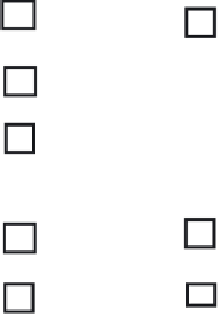Environmental Engineering Reference
In-Depth Information
Source
1.7 s
1.7 s
0.1 s
0.1 s
1
4
1.3 s
1.3 s
0.5 s
0.5 s
2
3
0.9 s
0.9 s
Figure 4.18
Closed loop distribution system with directional over-current and
earth fault protection
On distribution systems the long clearance times, which are necessary to allow
discrimination (sometimes called fault-grading) with higher network levels, can
present a problem. Long clearance times are acceptable on low fault level net-
works, but as fault level is increased, e.g. by the introduction of local generation,
network damage may result if clearance times are not shortened. The same reverse
power issue may exist with transformers at lower voltage levels.
Modern distribution systems detect non-permanent faults by attempted circuit
re-closure. Another feature is automatic fault sectionalising, using multi-shot re-
closing circuit breakers and sectionalisers that count the number of times fault current
passes. A further development is automatic change-over. This type of scheme detects
loss of one source of radial supply and closes a normally open source automatically
within a few seconds. These systems are designed to minimise both the cost of
network development and the number of customer minutes lost due to interruptions.
However, this type of system automation represents a significant problem when
embedded generation is present beyond the automation. Two issues may arise:
if the embedded generation trips, as a result of islanding protection, then the
transformer voltage control may be on the wrong tap position when the auto-
matic re-closure occurs, giving rise to low voltage to customers
●
if the embedded generation is not allowed to trip, there is likely to be a form of
mal-synchronisation with the system, resulting in a risk of plant damage
●



























































Search WWH ::

Custom Search